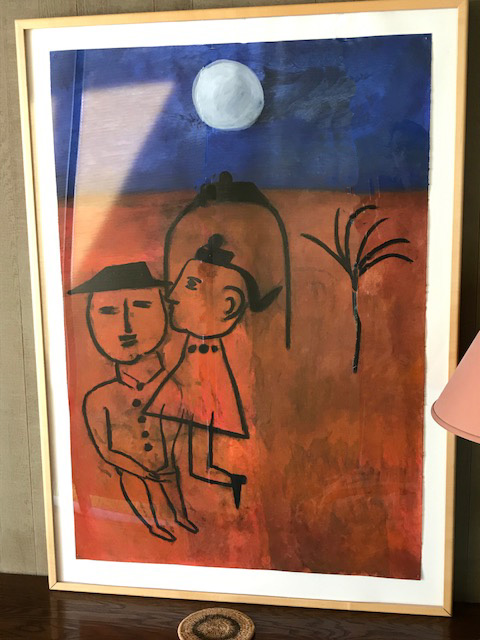Wren, Oregon — Early Monday morning we slipped under the wire fence and climbed a hillside cow pasture, then watched while the light dimmed and crickets tuned up their fiddles.

As the moon slipped in front of the sun, the skies darkened to indigo and the most wondrous jewel was revealed, hanging in the sky where the sun had been – a total solar eclipse. We were transfixed.

Then roosters crowed and the skies began to lighten again.
Over the next hours, as the eclipse moved coast to coast across America, millions of people shared our gobsmacked, goosebumped wonder.
Eclipses have amazed humans for a long time. Ancient Mesopotamian warriors who witnessed a solar eclipse on May 28, 585 BC interrupted a longstanding war between the Medes and the Lydians. They saw the eclipse as an omen. Fighting immediately stopped and they agreed to a truce.
For modern scientists, this eclipse offered a chance to study the sun’s corona. A Nova special which included film of Monday’s event, detailed how scientists are trying to understand the forces that impact coronal heating – the surface of the sun is 10,000 degrees but the corona can heat up to 1 million degrees.

We gathered in a field near my sister Kate’s house. She labeled it a “Partial Reunion Total Eclipse,” and made t-shirts based on our LITTLE WOLF’S FIRST HOWLING artwork. Note the wolves wear protective sunglasses and the white ink glows in the dark.
• • • • •
Monday’s eclipse may have been the most photographed event in the history of mankind.
My friend, photographer Max Waugh got some amazing shots from Central Oregon.


See more of Max’s images here: Max Waugh
In Seattle, my friend Karen captured the effect of the eclipse on leaf shadows in her driveway.
Another friend, Melanie, set up an Optical Sun Projector with binoculars and snapped photos as the reflection crossed a screen. She explained: “The binoculars are set up on a tripod, facing the sun. One lens is occluded to allow for one image. This will project a reflection onto a screen. I made my screen out of white black-out fabric and made a little tent over to help balance light.” The image on the right takes into account a cloud passing by.
Before the advent of photography, artists painted the eclipse. A current exhibit at the Princeton Art Museum includes the paintings of Howard Russell Butler, whose “scrupulously accurate paintings” captured the colors in the corona. Check out his methods here. http://artmuseum.princeton.edu/transient-effects
• • • • •
I was proud of the moon on her Big Day. I am a longtime fan. I wear a crescent moon necklace. Joe Max Emminger’s painting of a tender moon hangs in our entry

and Margaret Chodos-Irvine’s moon series hangs over the piano — where the chart for “How High the Moon,” stands ready.

The moon has a starring role in my picture books, too. The highpoint of FRANK AND IZZY SET SAIL, where they sing to the stars, features a crescent moon,

and Kate’s and my latest, LITTLE WOLF’S FIRST HOWLING, is all about howling the full moon to the top of the sky. I love how Kate painted the moonlight into our book.

This eclipse was incredible, even more incredible when you think it is only possible because the sun and moon appear the same size in Earth’s sky because the sun’s diameter is about 400 times greater – but the sun is also about 400 times farther away. The disc of the moon fits perfectly over the sun.
Like the millions of others who witnessed Monday’s eclipse, I was filled with wonder when the temperatures dropped, the sky darkened and the beautiful jewel appeared. Quite a memorable Partial Reunion Total Eclipse.








































